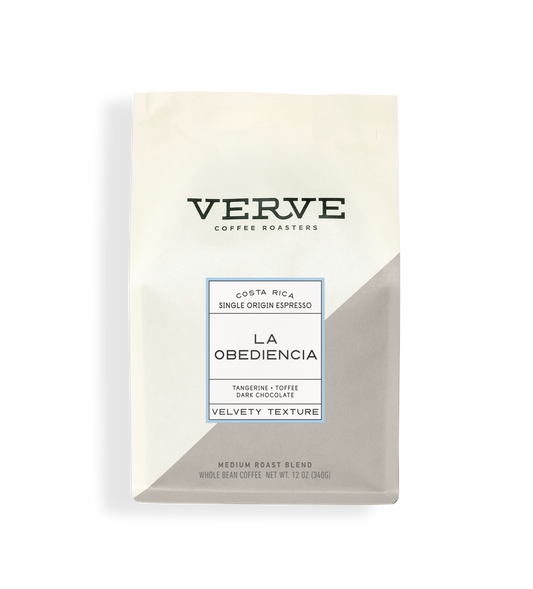SOE Single Origin Espresso – The Perfect Choice for Espresso Lovers
SOE Single Origin Espresso – The Perfect Choice for Espresso Lovers
Blog Article
Recognizing Coffee Beans: the Trip From Espresso to Blended Coffee Beans

The Origins of Coffee: An International Viewpoint
While you may think of coffee as a contemporary staple, its beginnings map back centuries, linking with cultures across the world. The tale starts in Ethiopia, where tale says a goat herder called Kaldi found the stimulating impacts of coffee beans after noticing his goats frolicking vigorously after eating them.
As profession courses broadened, coffee made its way to Europe in the 17th century, quickly gaining popularity. It changed from a mystical beverage right into an everyday routine, inspiring events and intellectual exchanges. Each culture included its special spin to coffee prep work, enriching its background. This global trip highlights just how coffee connects us, transcending borders and joining varied practices through a straightforward bean.
Growing and Harvesting of Espresso Beans
As coffee's trip developed, the emphasis shifted to the farming and harvesting of certain bean ranges, especially those used for espresso. You'll discover that coffee beans frequently originate from Arabica or Robusta plants, each offering distinctive flavors. The ideal growing conditions include high altitudes and abundant, well-drained dirt, which enhance the beans' quality.
Throughout the harvest, selecting techniques differ. Timing is important; you desire to gather when the cherries reach peak ripeness for optimum taste.
As soon as collected, the beans are prepared for handling, which is necessary in determining their final preference. Understanding the growing and harvesting procedures offers you understanding into what goes right into your preferred coffee, enhancing your recognition for every cup.
Processing Methods: From Cherry to Bean
Currently that you've discovered collecting coffee beans, allow's discover just how those cherries change right into the coffee beans you enjoy. You'll see how different harvesting techniques impact flavor, adhered to by the necessary actions of fermentation and drying. We'll break down the milling and grading procedure that determines your coffee's high quality.
Gathering Methods Explained
When it pertains to coffee, recognizing harvesting strategies is important, given that they straight influence the taste and high quality of the beans you delight in. There are 2 primary techniques: selective selecting and strip picking. Discerning choosing involves hand-picking just ripe cherries, guaranteeing you obtain the very best high quality beans. This method commonly leads to a richer flavor account, though it's even more labor-intensive. On the various other hand, strip choosing means harvesting all cherries at the same time, despite perfection. While it's quicker and cheaper, this can cause a mix of flavors, affecting the last item. Ultimately, the option of harvesting method can considerably influence your coffee experience, so it's worth knowing how those beans made it to your cup.
Fermentation and Drying Out
After harvesting, the following steps in processing coffee beans play a significant duty in shaping their flavor. You'll find that fermentation is vital, as it helps break down the mucilage surrounding the beans, improving their taste account. Depending upon the technique, this procedure can last from a couple of hours to numerous days, with varying outcomes based on temperature and humidity.
When fermentation is total, drying adheres to, which is similarly vital. You can select from sun-drying or mechanical drying out methods. Sun-drying allows the beans to soak up tastes from the environment, while mechanical drying warranties constant dampness levels no matter climate. Correct drying out is vital to stop mold and preserve the beans' high quality, eventually influencing your cup of coffee.
Milling and Grading Process
As fermentation and drying out set the stage for flavor development, the milling and grading process guarantees that only the ideal coffee beans make it to your mug. This phase entails removing the outer layers of the coffee cherry, including the parchment and husk. Top notch beans get a higher grade, resulting in a richer coffee experience.
Toasting Methods: Opening Taste Possible
When you roast coffee beans, the technique you choose can drastically affect the flavor account. Comprehending the connection between time, temperature, and toasting techniques is vital to disclosing the potential of your mixture. Let's discover exactly how these aspects come together to develop the ideal mug.
Toasting Approaches Clarified
While you may assume that all coffee toasting approaches generate the exact same results, the truth is that each method exposes one-of-a-kind flavor possibilities in the beans. Drum toasting makes use of a turning drum to uniformly distribute heat, boosting caramelization and creating a well balanced flavor. Air roasting, on the various other hand, distributes warm air around the beans, advertising a lighter roast with noticable level of acidity.

Impact on Flavor Profile
Different toasting techniques not only influence the procedure but also considerably impact the taste profile of the coffee beans. When you select a light roast, you'll experience bright acidity and floral notes, showcasing the bean's origin. On the other hand, a medium roast balances acidity with sweetness, frequently revealing chocolatey touches. Dark roasts, on the various other hand, draw out vibrant, great smoky flavors, sometimes concealing the bean's one-of-a-kind features. Each technique reveals various oils and substances, causing a variety of tastes. By explore various roasting styles, you can discover which accounts resonate with your palate. Recognizing these nuances helps you value the creativity behind your cup of coffee, boosting your overall experience with every sip.
Time and Temperature Elements
To launch the complete flavor capacity of coffee beans, both time and temperature during the toasting procedure play considerable duties. When roasting, you'll locate that higher temperatures can swiftly create flavors, however if you hurry it, you could finish up with burned notes. Alternatively, lower temperatures permit a much more progressive flavor growth, showcasing the beans' unique features.

Timing is simply as crucial; prolonging the roast as well long can result in a loss of acidity and brightness, while as well short a roast could leave the beans underdeveloped. Finding that pleasant spot requires method and experimentation. By readjusting these elements, you can expose the rich, complex flavors hidden within each bean, creating a really impressive coffee experience.
The Art of Blending: Crafting One-of-a-kind Coffee Accounts

Start by choosing a base coffee that provides a strong structure. Then, choose corresponding beans to improve particular taste notes. A brilliant Ethiopian bean can bring fruitiness, while a rich Brazilian coffee adds body. Experimentation is key-- do not be terrified to readjust proportions until you find your suitable profile.
As you blend, bear in mind that each combination narrates. You're not just making coffee; you're producing an experience. So, take your time, taste often, and take pleasure in the trip of finding your trademark mix.
Developing Methods: Just How Preparation Affects Flavor
Blending coffee opens a domain of taste opportunities, but exactly how you make that mix can significantly influence your final cup. Various developing techniques remove unique tastes and aromas, so it's important to pick wisely. For example, a French press enables sediments and oils to stay, producing a rich, full-bodied experience. On the various other hand, a pour-over highlights the coffee's quality and illumination, excellent for showcasing fragile notes.
Coffee, with its high pressure, generates a focused shot that emphasizes sweetness and crema. If you prefer a lighter mixture, consider a chilly mixture technique; it yields a smooth, less acidic taste.
Eventually, testing is essential. Readjusting variables like water temperature, grind dimension, and make time can transform your coffee's profile. So, welcome the art of brewing to find the flavors hidden in your coffee blends. The right method can raise your experience informative post to brand-new elevations.
The Future of Coffee: Sustainability and Innovation
As the coffee market advances, sustainability and advancement are coming to be vital for resolving environmental obstacles and conference consumer demands. You'll discover that more coffee i thought about this companies are embracing green techniques, from sourcing beans ethically to executing lasting farming strategies. These changes not just assist the planet but also boost the high quality of the coffee you appreciate.
You could see innovations like naturally degradable product packaging and water-saving developing approaches that minimize waste. Advanced innovation, such as blockchain, is likewise becoming preferred, making certain openness in the supply chain, which allows you to trace your coffee back to its beginnings.
Furthermore, purchasing local neighborhoods and sustaining farmers with fair trade efforts fosters a more lasting coffee ecological community. As you sip your next cup, keep in mind that your selections can add to a brighter future for coffee. By selecting sustainable brand names, you're not simply enjoying a beverage; you're making a positive impact on the globe.
Frequently Asked Inquiries
What Is the Distinction Between Arabica and Robusta Beans?
Arabica beans are smoother, sweeter, and have a higher level of acidity, while robusta beans are stronger, more bitter, and have more high levels of caffeine. You'll notice these differences in flavor and fragrance when brewing your coffee.
How Does Altitude Affect Coffee Bean Flavor?
Elevation influences coffee bean flavor substantially. Higher altitudes produce beans with brighter level of acidity and complex tastes, while reduced elevations frequently produce beans that are larger and less nuanced. You'll notice these differences in your cup!
What Are the Health Advantages of Drinking Coffee?
Consuming coffee can improve your energy, enhance psychological emphasis, and also improve physical performance. It's rich in antioxidants, may lower the danger of certain illness, and can promote a much healthier metabolic rate when consumed in small amounts.
Can Coffee Beans Be Recycled for Brewing?
Yes, you can reuse coffee beans for developing, yet the taste may be weaker. If you take pleasure in exploring, try recycling them in various methods, like chilly brews or contributing to smoothies for an extra kick.
Exactly how Should I Store Coffee Beans for Freshness?
To keep your coffee beans fresh, keep them in a closed container in a great, dark location. Avoid exposing them to wetness, warmth, or light, as these variables can swiftly degrade their flavor and scent.
Understanding Coffee Beans: the Journey From Coffee to Blended Coffee Beans.
Currently that you've found out about collecting espresso beans, let's check out exactly how those cherries transform right into the coffee beans you like.When you roast coffee beans, the approach you choose can significantly influence the taste account - Single great post to read Origin Espresso.While you could think that all coffee toasting methods generate the very same outcomes, the truth is that each method exposes one-of-a-kind taste possibilities in the beans.Different toasting approaches not just affect the process however additionally greatly impact the taste profile of the coffee beans
Report this page